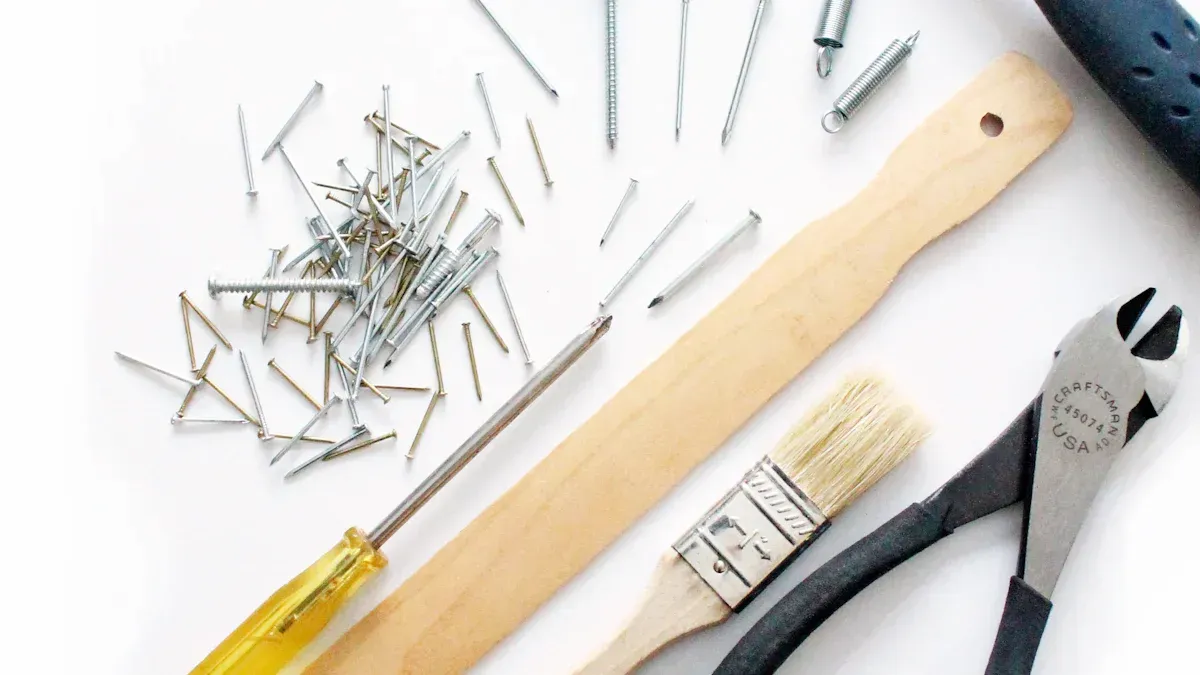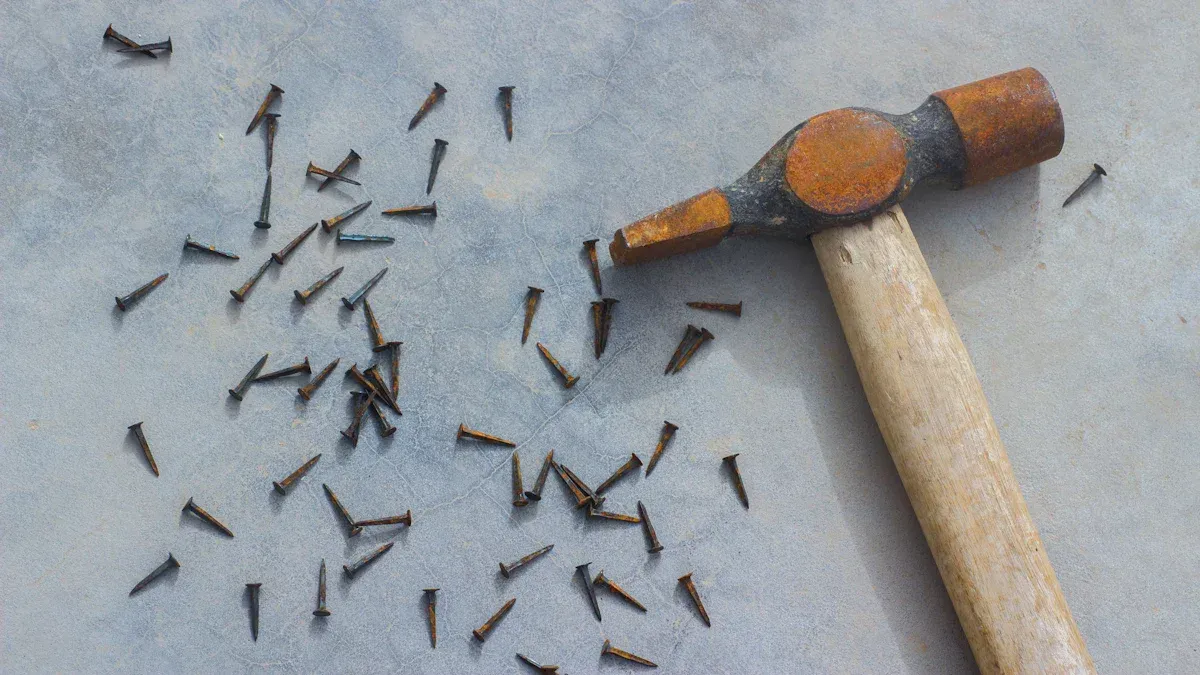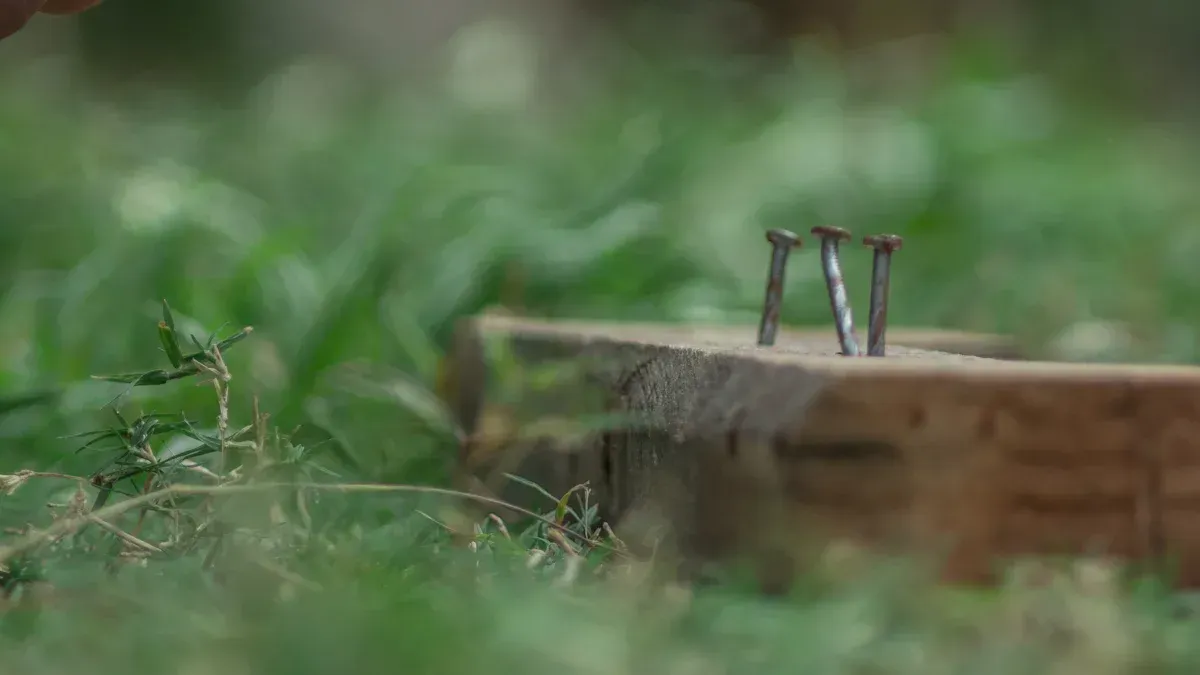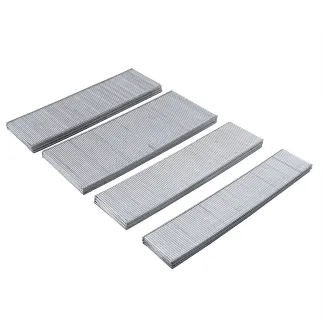What Is the Difference Between Brad and Finish Nails
Mar . 11, 2025 16:15
Comparing Brad Nails and Finish Nails

Explore the Brad nail vs finish nail
| Features | Brad Nail | Finish Nail |
|---|---|---|
| Size and Thickness | Thinner, 18-gauge for delicate tasks. | Thicker, 15 or 16-gauge for strength. |
| Holding Power | Lower holding power for light materials. | Higher holding power for heavy materials. |
| Material Compatibility | Best for thin, delicate materials. | Ideal for dense, heavy materials. |
| Appearance After Installation | Less noticeable, often no filling is needed. | Larger holes may require filling. |
| Common Uses | Used for trim and light projects. | Used for cabinetry and heavy-duty tasks. |
| Nail Head Design | Small head for minimal visibility. | Rounded head for a polished look. |
| Installation Tools | Compatible with brad nailers. | Compatible with finish nailers. |
When you're working on a project, choosing the right nail can make all the difference. Brad nails and finish nails may look similar, but they serve different purposes. Brad nails are thin and ideal for lightweight tasks, while finish nails are thicker and handle heavier jobs. Knowing what difference is between brad nailer and finish nail helps you pick the right tool for the job.
Key Takeaways
Brad nails work well for light projects. Their thin shape stops delicate materials from breaking, so they are great for trim and decoration.
Finish nails are stronger and hold better. Use them for bigger jobs like building cabinets or attaching baseboards, where strength and a neat look matter.
Pick the right nail for your project. Use brad nails for small, delicate tasks. For sturdy work, finish nails are best.
What Are Brad Nails?

Definition and Characteristics of Brad Nails
Brad nails are small, thin nails designed for precision work. They typically have a slender shank and a small head, making them less noticeable after installation. These nails are often made from steel wire and are compatible with mechanical nailers for quick and efficient application. Their lightweight design ensures they don’t split delicate materials, which is why they’re a favorite for detailed woodworking projects.
In the construction world, brad nails are defined by specific technical standards. For instance:
Size and Length: Measured from under the head to the tip, ensuring consistency.
Gauge: The diameter of the shank is tightly controlled, with tolerances as small as ±.002 inches.
Materials: Most brad nails are made of steel, often with a bright or galvanized finish for durability.
These characteristics make brad nails a reliable choice for projects requiring finesse and precision.
Common Sizes and Materials of Brad Nails
Brad nails come in various sizes and materials to suit different tasks. Typically, they range in length from 5/8 inch to 2 inches, with the size chosen based on the thickness of the material you’re working with. A good rule of thumb is to use a nail that’s three times the thickness of the material. This ensures a secure hold without over-penetrating.
Steel is the most common material for brad nails, with galvanized steel being particularly popular due to its resistance to corrosion. Stainless steel brad nails are also gaining traction, especially in areas prone to moisture. Recently, there’s been a growing interest in eco-friendly materials, reflecting the industry’s shift toward sustainability.
Typical Uses for Brad Nails
You’ll find brad nails incredibly versatile for lightweight and delicate tasks. They’re perfect for attaching trim, molding, and decorative pieces without leaving noticeable marks. In woodworking, they’re commonly used for furniture-making, securing small cabinet parts, and attaching thin panels. Crafts and small DIY projects also benefit from their precision.
Brad nails shine in situations where you want to avoid splitting materials like picture rails or crown moldings. They’re easy to install using a hammer or pneumatic nail gun, making them a go-to for light finishes. Whether you’re working on a home renovation or a creative craft, brad nails from trusted suppliers like Hebei Minmetals Co., Ltd. ensure quality and reliability.
What Are Finish Nails?

Definition and Characteristics of Finish Nails
Finish nails are a go-to choice when you need strength and a polished look. These nails have a small, rounded, and tapered head that blends seamlessly into the surface after installation. Their slender shaft reduces the risk of splitting wood, making them perfect for detailed work. You’ll often find finish nails made from steel, with coatings like zinc, vinyl, or galvanized finishes to boost durability and performance.
Here’s what makes finish nails stand out:
Design Features: A smooth, tapered head for a clean finish.
Materials: Steel with protective coatings for added strength.
Sizes: Lengths range from 1 to 3 inches, with gauges between 16 and 10.
Applications: Ideal for trim, molding, cabinetry, and interior finishing.
These features make finish nails a reliable option for projects where both strength and aesthetics matter.
Common Sizes and Materials of Finish Nails
Finish nails come in a variety of sizes and materials to suit different needs. They typically range from 1 to 3 inches in length, with gauges that determine their thickness. For example, a 16-gauge nail is thinner than a 10-gauge nail. This variety allows you to choose the right size based on the material and project requirements.
When it comes to materials, stainless steel and galvanized steel are the most common. These materials resist rust and corrosion, making them suitable for long-lasting projects. Copper finish nails are also available, offering a unique aesthetic for specific applications. Recently, there’s been a growing demand for eco-friendly materials, reflecting advancements in manufacturing technology and a shift toward sustainability.
Typical Uses for Finish Nails
Finish nails excel in tasks that require precision and durability. They’re perfect for installing trim, molding, and baseboards, where a neat appearance is essential. You’ll also find them widely used in cabinetry and fine carpentry, where aesthetics and strength go hand in hand.
Here are some common applications:
Attaching crown molding and chair rails.
Securing door and window casings.
Building furniture or cabinetry with a polished finish.
Finish nails from trusted suppliers like Hebei Minmetals Co., Ltd. ensure you get the quality and reliability needed for these demanding tasks. Whether you’re working on a home renovation or a professional carpentry project, finish nails provide the strength and clean look you need to get the job done right.
Tip: For projects requiring both strength and a smooth finish, finish nails are your best bet. Their versatility makes them a must-have in any toolkit.
What is difference between brad nailer and finish nail
Size and Thickness
When it comes to size and thickness, brad nailers and finish nailers differ significantly. Brad nailers use 18-gauge nails, which are thinner and more delicate. These nails typically have a thickness of 0.0475 inches (1.22 mm). On the other hand, finish nailers use thicker nails, either 15-gauge or 16-gauge, with thicknesses ranging from 0.0625 inches (1.63 mm) to 0.072 inches (1.83 mm).
Nail Type
Gauge
Thickness (inches)
Thickness (mm)
Brad Nailer
18
0.0475
1.22
Finish Nailer
15
0.072
1.83
16
0.0625
1.63
This difference in size makes brad nailers ideal for lightweight tasks, while finish nailers are better suited for heavy-duty projects. If you're working on delicate trim or thin materials, the smaller size of brad nails ensures precision without splitting the wood.
Holding Power and Strength
The holding power of a nail depends on its thickness. Finish nailers, with their thicker nails, provide greater holding strength. This makes them perfect for securing heavy materials like baseboards, crown molding, or furniture. Brad nailers, on the other hand, have lower holding power due to their thinner nails. They work best for delicate tasks where excessive force could damage the material.
Feature
Brad Nailer
Finish Nailer
Holding Power
Lower, suitable for delicate work
Higher, suitable for heavy materials
If you're building a cabinet or installing trim, consider the weight and durability of the material. For heavy-duty tasks, finish nails from Hebei Minmetals Co., Ltd. offer the strength you need.
Material Compatibility
Brad nailers excel with thin materials like lightweight trim, veneers, or small decorative pieces. Their thinner nails reduce the risk of splitting fragile wood. Finish nailers, however, are better suited for dense materials like MDF, plywood, or hardwood.
Feature
Brad Nailer
Finish Nailer
Best For
Delicate trim work, light-duty tasks
Heavy trim work, baseboards, crown molding
Material Compatibility
Thin materials
Dense materials like MDF and plywood
Choosing the right tool depends on the material you're working with. For delicate projects, brad nails ensure a clean finish. For tougher jobs, finish nails provide the durability you need.
Appearance After Installation
The appearance of the nail after installation is another key difference. Brad nails have smaller heads, which often don’t require filling. This makes them less noticeable and ideal for projects where aesthetics matter. Finish nails, with their larger heads, may leave visible holes that need filling and sanding for a polished look.
Feature
Brad Nailer
Finish Nailer
Appearance
Less noticeable nail heads
Larger holes, needs filling
If you're aiming for a seamless finish, brad nails are the way to go. However, for projects requiring strength over subtlety, finish nails are a reliable choice.
Tip: Keep both brad and finish nails in your toolkit. This way, you’ll always have the right option for any project. Hebei Minmetals Co., Ltd. offers high-quality nails for all your needs.
When to Use Brad Nails vs. Finish Nails
Best Projects for Brad Nails
Brad nails are your go-to choice for lightweight and delicate projects. Their thin, 18-gauge design makes them perfect for tasks where precision matters. For example, you can use brad nails to attach small trim pieces, decorative molding, or picture frames. They’re also great for securing veneers or thin panels without splitting the material.
If you’re working on crafts or DIY projects, brad nails are a lifesaver. They leave tiny holes that often don’t need filling, which saves you time and effort. Plus, their smaller size ensures a clean, polished look. Whether you’re installing base shoe molding or assembling a jewelry box, brad nails provide the finesse you need.
Best Projects for Finish Nails
When strength and durability are essential, finish nails step in. These nails, available in 15 or 16-gauge, are thicker and stronger than brad nails. They’re ideal for heavier tasks like attaching baseboards, crown molding, or door casings. If you’re building furniture or cabinetry, finish nails offer the holding power to keep everything secure.
Finish nails are also great for projects where aesthetics matter. Although they leave slightly larger holes, a bit of wood filler can make them disappear. For tasks like installing chair rails or constructing a bookshelf, finish nails deliver both strength and a professional finish.
Factors to Consider When Choosing
Choosing between brad nails and finish nails depends on a few key factors:
Material Thickness: Use brad nails for thin materials and finish nails for thicker, denser ones.
Holding Power: Finish nails provide greater strength, making them better for heavy-duty tasks.
Appearance: Brad nails leave smaller holes, which is ideal for projects where you want a seamless look.
Project Type: Lightweight projects like trim work suit brad nails, while finish nails excel in structural tasks.
Understanding what is difference between brad nailer and finish nail helps you make the right choice. For versatility, consider keeping both types in your toolkit. Hebei Minmetals Co., Ltd. offers high-quality brad and finish nails to meet all your project needs.
Choosing between brad and finish nails depends on your project’s needs. Brad nails work best for lightweight, delicate tasks, while finish nails handle heavier jobs. Here’s a quick comparison to help you decide:
Feature
Brad Nails (18-gauge)
Finish Nails (15- or 16-gauge)
Thickness
Thinner, less holding strength
Thicker, stronger holding power
Applications
Trim work, delicate projects
Cabinetry, larger projects
Keep both in your toolkit for versatility. Hebei Minmetals Co., Ltd. offers high-quality types of nails for building for every project.
Brad Nails and Finish Nails FAQs
What is the main difference between brad nails and finish nails?
Brad nails are thinner and better for lightweight tasks. Finish nails are thicker and provide more holding power for heavy-duty projects. Hebei Minmetals Co., Ltd. offers both options.
Can I use brad nails for baseboards?
You can, but finish nails are better for baseboards. They provide stronger holding power, ensuring durability. Choose high-quality finish nails from Hebei Minmetals Co., Ltd. for the best results.
Do brad nails or finish nails leave bigger holes?
Brad nails leave smaller holes, often requiring no filling. Finish nails leave larger holes that may need wood filler for a polished look. Both are available at Hebei Minmetals Co., Ltd.





















